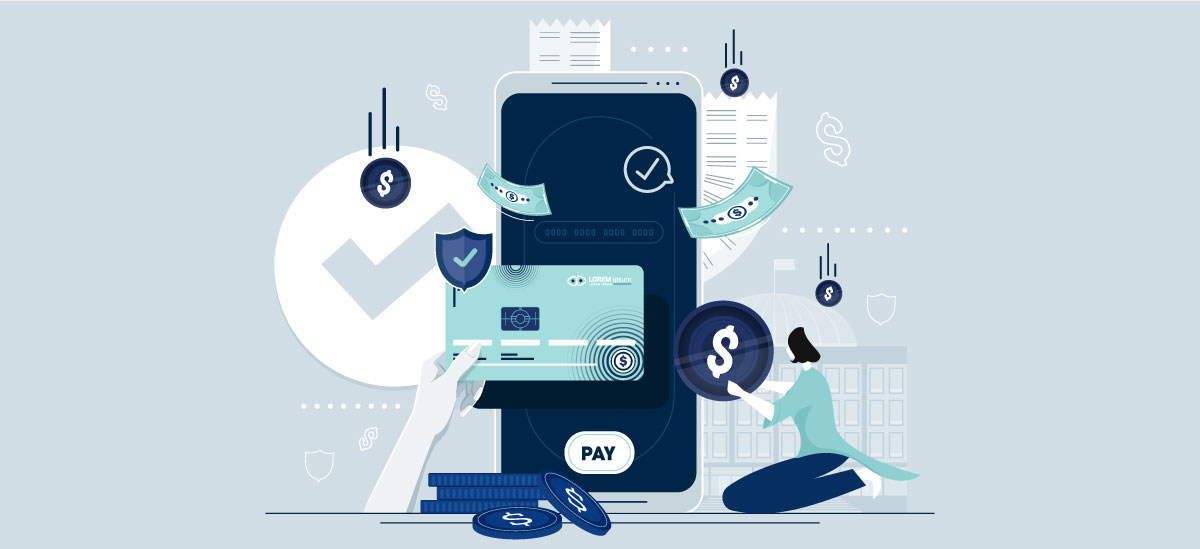
Many small business owners now operate across channels, including brick-and-mortar stores, on-the-go services, online platforms, and even just through apps on a phone or tablet. No matter the revenue source, offering customers the convenience of paying via a mobile method has become increasingly popular. Contactless chip card readers and USB charging cables help on-the-go businesses offer real-time, easy payment solutions for busy consumers and fellow entrepreneurs.
Understanding all of the different mobile payment types out there today might feel overwhelming, but having a grasp of which tools may fit best for your business can yield a competitive advantage, streamline processes, and enhance customer satisfaction. Let’s first delve into the most prominent mobile payment solutions and then explore how four segments of the business world can harness today’s technology to boost sales.
1. Contactless Chip-Card Payments: Tap and Go
Following the pandemic, what was a want to pay for goods and services quickly without touchpoints became a need. Contactless payments are commonplace today, empowering customers to transact quickly and securely by simply tapping a card or waving a cell phone over a device. This is made possible through what is known as Near Field Communication (NFC). Thanks to short-wave wireless technologies, NFC allows consumers to share their data between an NFC tag and a mobile device.[1] It’s a lot of tech talk that simply underscores new consumer preferences for on-the-go payment options. It may soon become table stakes to offer contactless payment terminals for a more efficient customer checkout experience.
2. Mobile Wallets: Convenience in Your Customer's Hand
Mobile wallets have revolutionized how people handle their money. According to a recent Forbes Advisor survey, 53% of consumers now use mobile wallets more often than traditional payment methods.[2] Entrepreneurs who integrate this technology into their businesses cater to this retail trend. There is more than a convenience benefit, though. Biometric authentication enhances personal data security, and that confidence may foster better customer loyalty.
3. QR Code Payments: Scan and Pay
Alongside mobile payment solutions, QR codes have gained popularity for their simplicity and versatility when making purchases at home or while out and about. If you haven’t incorporated this payment type yet, it’s not all that complicated and can be used on your website, flyers, and even business cards. In addition to being a payment method, QR codes can be a way to draw prospective customers to your company’s website as well as promote various sales campaigns. According to eMarketer, smartphone users scanning QR codes will increase to nearly 100 million by 2025.[3]
4. In-App Payments: Customized and Seamless
Does your business have an app? If so, including an in-app payment feature can provide a branded user experience, allowing customers to browse and then buy products and services more quickly. A 2022 small business survey revealed that 48% of firms have a mobile app, a 16-percentage point increase from the previous year.[4] In-app payments might be particularly effective for entrepreneurs operating in e-commerce and service-based industries.
5. Peer-to-Peer (P2P) Payments: Business Beyond Borders
P2P payment services are another choice. Platforms like Zelle® offer small business operators the opportunity to take payments from customers electronically, though, if using a third-party platform outside your bank, there are security risks to consider.[5] Still, P2P payments may be advantageous for certain international transactions, enabling businesses to expand their reach and serve a global customer base.
Mobile Payments: Helping a Range of Industries
Of course, different sectors and industries have unique needs and opportunities. Recognizing how mobile payment solutions can be applied to your niche is crucial for maximizing value and increasing sales. Armed with knowledge of today’s prominent and emerging payment technologies for the modern entrepreneur, let’s dig into four business world segments and how each may benefit from evolving merchant trends.
1. Manufacturing: Streamlining Transactions on the Factory Floor
Operational efficiency is a must for manufacturing companies. On-site transactions that can be done via a mobile device have the potential to save time on administrative tasks and even increase safety on the job at worksite. Mobile wallets and QR code payments might be considered for materials procurement or to complete vendor invoices. Completing financial transactions within the organization is another possible way to use mobile payments to streamline operations.
2. Professional Services: Elevating Client Transactions with In-App Payments
Service providers such as freelancers and consultants are particular parts of the workforce that can reap the benefits of tech-enabled payments. Here’s how: A dedicated mobile app might serve as a centralized hub for clients and vendors to review invoices, track project milestones, and make payments. Customers can also use an app in similar ways, thereby adding a layer of professionalism to the process and simplifying the transaction experience.
3. Retail: Embracing Contactless Payments for Faster Checkout
Retailers know that efficiency is the name of the game. Contactless payments can get customers in and out faster, thereby increasing potential sales. Equipping point-of-sale terminals with contactless payment options and mobile wallet functionality saves you and your customers time. Happier customers could then lead to positive word of mouth and maybe even a broader customer base down the road.
4. Food, Beverage & Agriculture: Enhancing the Dining Experience
Where else is speed king? Restaurants, cafes, and even slices of the agriculture chain. Mobile payment solutions, such as Linga, can improve the dining experience through contactless points of sale to reduce wait times, especially during peak hours. Food delivery companies stand to benefit from apps, while QR code payments can be used for farm-to-table orders at farmer’s markets. Running lean, mean, and clean is made easier through mobile payment options.
Empowering Small Businesses with Mobile Payment Technologies
Busy small business owners should seek ways to save time, increase customer satisfaction, and grow sales. Mobile payment technologies – some established, others still emerging – aid entrepreneurs in this mission. Today’s on-the-go consumers demand seamless retail purchases and easier transactions for services, all while ensuring data security and privacy. PNC Bank and its team of small business specialists are available to help entrepreneurs understand all the latest tech trends so that they can grow and thrive in the years ahead.
Similar Articles You May Also Be Interested In:
Why Payment Processing Matters to Small Businesses
A Small Business Guide to Payment Processing
Payments Outlook: What Business Owners Should Expect




